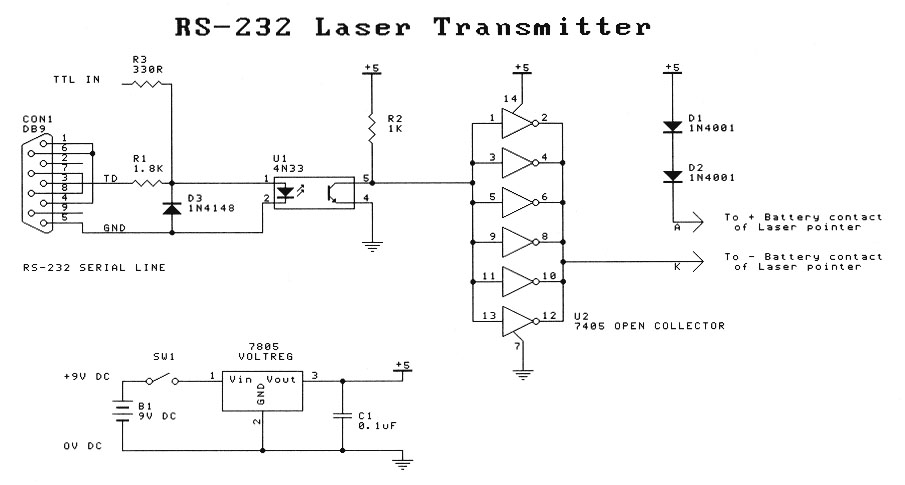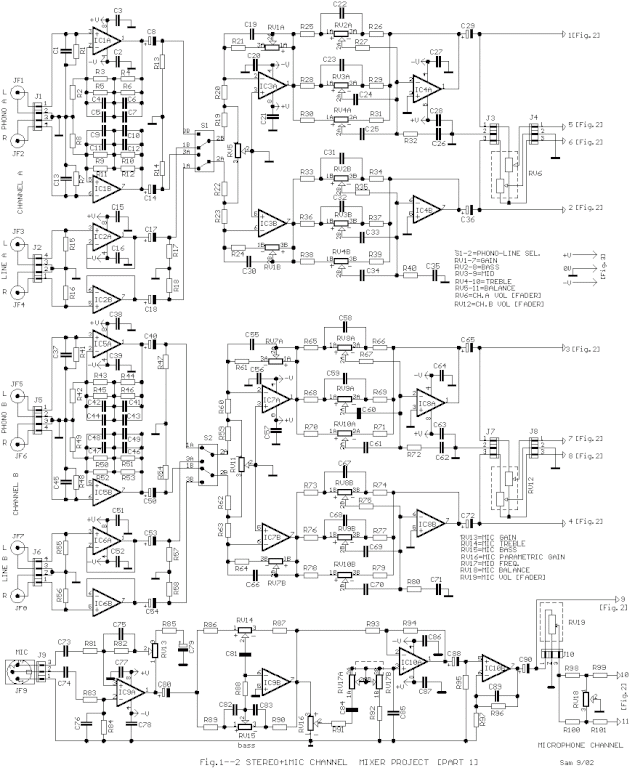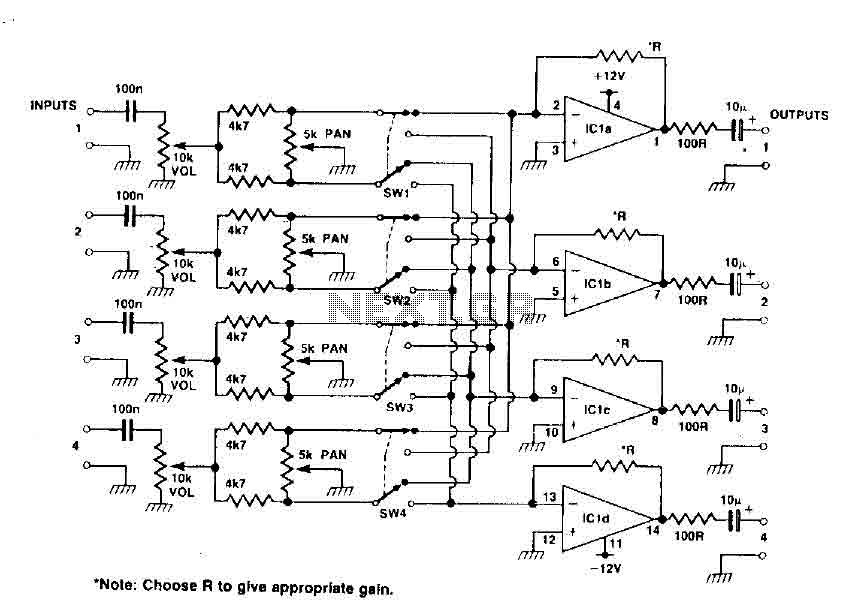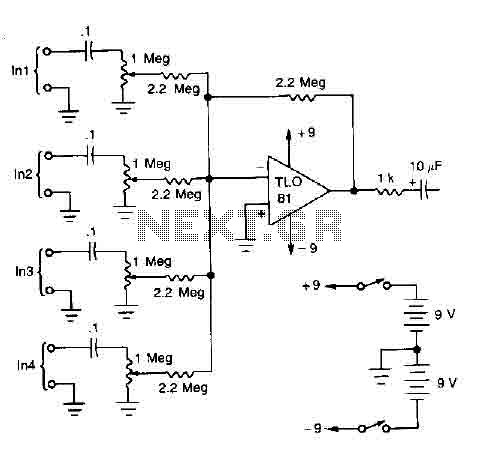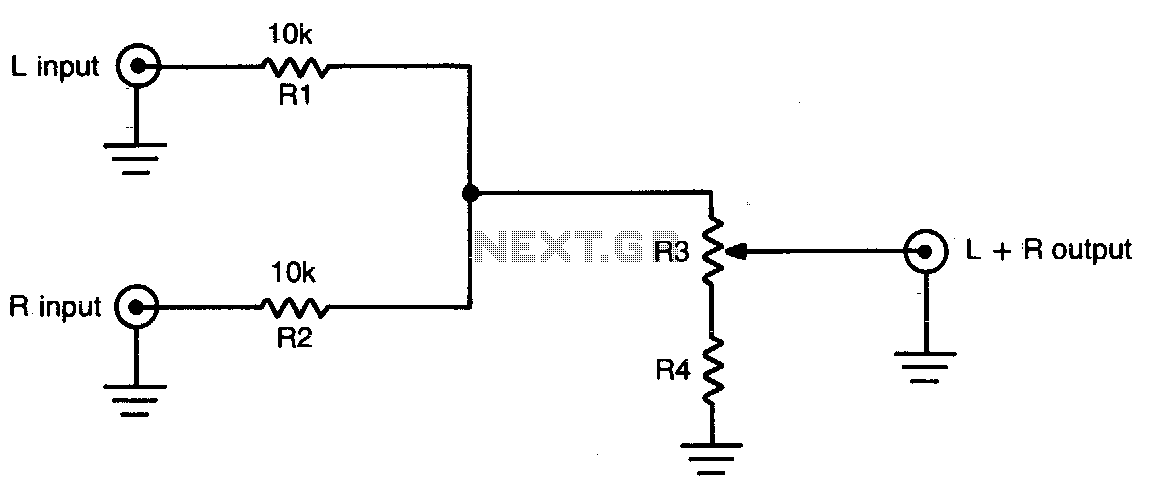
Hf Transceiver Mixer
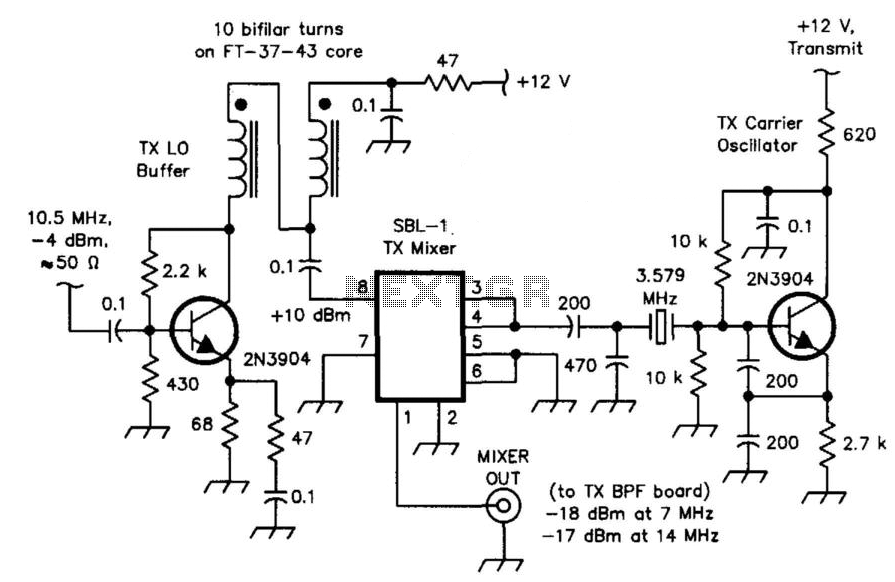
The transceiver mixer and carrier oscillator in the band-imaging (7- and 14-MHz) CW transceiver. Careful selection of drive levels and the use of a spectrally clean carrier oscillator ensure low spurious-signal content in the transmitter output. This transceiver mixer should prove useful in HF and VHF CW or SSB applications. A Mini-Circuits SBL1 low-cost mixer is utilized with a 3.579-MHz crystal oscillator that employs a low-cost TV color-burst crystal. By paying careful attention to drive levels, good performance and low spurious content can be achieved.
The described transceiver mixer and carrier oscillator configuration is integral to the operation of a band-imaging continuous wave (CW) transceiver, specifically designed for the 7- and 14-MHz frequency bands. The careful selection of drive levels is critical for optimizing the performance of the mixer while minimizing spurious signals that could degrade the quality of the transmitted output.
The Mini-Circuits SBL1 mixer is a low-cost solution that is well-suited for high-frequency (HF) and very high-frequency (VHF) applications, particularly in CW and single sideband (SSB) modes. The choice of a 3.579-MHz crystal oscillator, derived from a standard TV color-burst crystal, is a cost-effective measure that does not compromise the performance of the transceiver. This oscillator generates a stable frequency that serves as the carrier signal, which is essential for effective modulation and demodulation processes inherent in CW and SSB communications.
In the design, attention to drive levels plays a pivotal role in achieving low spurious content. Properly managing the input power to the mixer ensures that the signal remains within optimal operating conditions, thereby enhancing linearity and reducing unwanted harmonics. The transceiver's architecture emphasizes the importance of a spectrally clean carrier oscillator, which contributes to the overall signal integrity.
The resulting transceiver mixer and oscillator setup is expected to deliver reliable performance in various communication scenarios, making it a valuable component for amateur radio operators and professionals working within the specified frequency ranges. This design approach not only supports effective communication but also adheres to regulatory standards regarding spurious emissions, ensuring compliance and operational reliability. The transceiver mixer and carrier oscillator in the band-imaging (7- and 14-MHz) CW transceiver. Careful selection of drive levels, and use of a spectrally clean carrier oscillator, assure low spurious-signal content in the transmitter output. This transceiver mixer should prove useful in HF and VHF CW or SSB applications. A Mini-Circuits SBL1 low-cost mixer is used with a 3.579-MHz crystal oscillator that uses a low-cost TV color-burst crystal.
By paying careful attention to drive leads, good performance and low spurious content can be obtained.
The described transceiver mixer and carrier oscillator configuration is integral to the operation of a band-imaging continuous wave (CW) transceiver, specifically designed for the 7- and 14-MHz frequency bands. The careful selection of drive levels is critical for optimizing the performance of the mixer while minimizing spurious signals that could degrade the quality of the transmitted output.
The Mini-Circuits SBL1 mixer is a low-cost solution that is well-suited for high-frequency (HF) and very high-frequency (VHF) applications, particularly in CW and single sideband (SSB) modes. The choice of a 3.579-MHz crystal oscillator, derived from a standard TV color-burst crystal, is a cost-effective measure that does not compromise the performance of the transceiver. This oscillator generates a stable frequency that serves as the carrier signal, which is essential for effective modulation and demodulation processes inherent in CW and SSB communications.
In the design, attention to drive levels plays a pivotal role in achieving low spurious content. Properly managing the input power to the mixer ensures that the signal remains within optimal operating conditions, thereby enhancing linearity and reducing unwanted harmonics. The transceiver's architecture emphasizes the importance of a spectrally clean carrier oscillator, which contributes to the overall signal integrity.
The resulting transceiver mixer and oscillator setup is expected to deliver reliable performance in various communication scenarios, making it a valuable component for amateur radio operators and professionals working within the specified frequency ranges. This design approach not only supports effective communication but also adheres to regulatory standards regarding spurious emissions, ensuring compliance and operational reliability. The transceiver mixer and carrier oscillator in the band-imaging (7- and 14-MHz) CW transceiver. Careful selection of drive levels, and use of a spectrally clean carrier oscillator, assure low spurious-signal content in the transmitter output. This transceiver mixer should prove useful in HF and VHF CW or SSB applications. A Mini-Circuits SBL1 low-cost mixer is used with a 3.579-MHz crystal oscillator that uses a low-cost TV color-burst crystal.
By paying careful attention to drive leads, good performance and low spurious content can be obtained.
